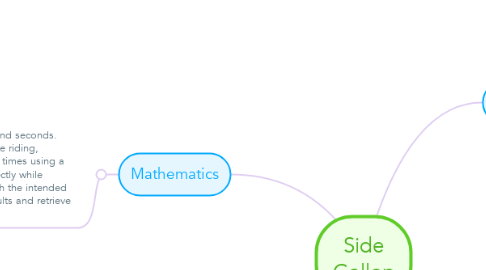Side Gallop
by Lilly Gooley

1. Home Context
1.1. For the week where students are developing the side gallop, they will provided with 'Horsey Homework'. Their 'Horsey Homework' will consist of a number horse themed games andother activities that will assist in developing the side gallop.
1.2. Encourage students who walk or ride to school with their parents to have a 'Gallop to School Day' instead. Alternatively, for those who don't walk to school, send a note home asking parents to promote the FMS by encouraging them to side gallop to their weekend sport, side gallop to bed etc. To accompany this, the teacher will send home teaching cards with cues to assist the parents in developing the FMS as well as a checklist where parents can report on their progress throughout the week.
2. Transitions
2.1. Students must side gallop to and from areas of the school, for example, from the classroom to the sports shed, from the sports shed to the library etc. Students leave the classroom by side galloping, encourage students to come up with new and exciting games that involve the side gallop at recess and lunch, e.g. 'Side Gallop Footy'. Students participate in a 10-15 minute 'sweat session' and every morning during the week the side gallop is being develop, which involves games using the side gallop, such as 'red rover cross over' but students side gallop instead of run.
3. Creative Arts
3.1. DRAS2.1 Takes on and sustains roles in a variety of drama forms to express meaning in a wide range of imagined roles. Students practise the side gallop through a number of imagined situations, such as taking on the role of a horse through improvisation, mime, movement and storytelling. The important aspect of this lesson will be to ensure students are performing the side gallop correctly while remaining in character and engaging in the type of dramatic play required of them.
4. Mathematics
4.1. MA2-13MG Reads and records time in one minute intervals and converts between hours, minutes and seconds. Students compare the speed of the side gallop to other various forms of transportation such as bike riding, walking, jogging and hopping. Students time these with stop watches and record and compare the times using a table. The significance of this lesson will be to ensure students are performing the side gallop correctly while engaging with the mathematical language and appropriate mathematical resources in order to reach the intended outcome. For example, can students convert all times to seconds, can they construct a table of results and retrieve information from this, can they use mathematical language, such as, 'slower', 'faster' etc.
5. English
5.1. EN2-2A Plans, composes and reviews a range of texts that are more demanding in terms of topic, audience and language. Students work in small groups to plan and compose a written procedure instructing an audience of young children (5 and 6 years old) on how to perform the side gallop. This will allow students to consider topic, audience and language as well as reflect on how to side gallop.


